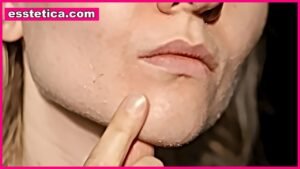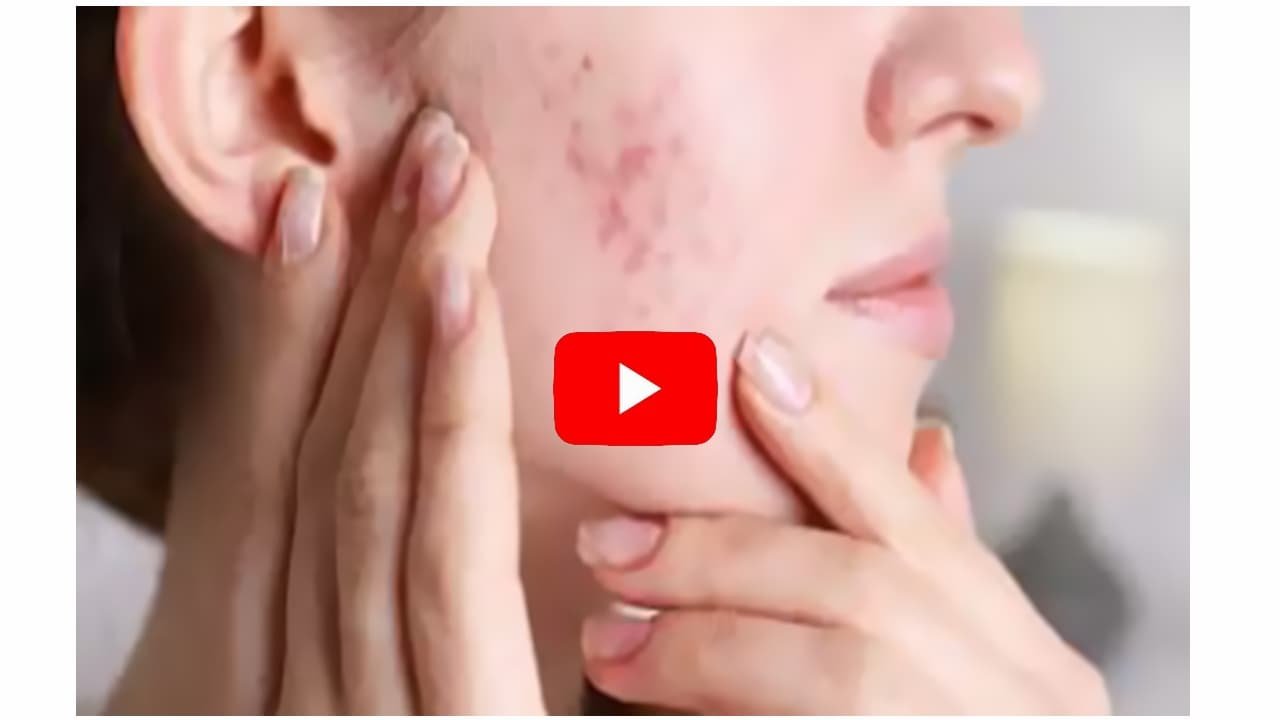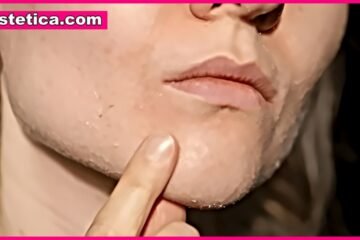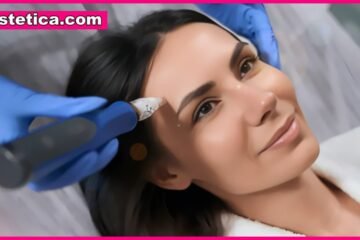We all know acne as that annoying skin condition that shows up at the worst possible time — right before a big meeting, a date, or an event where we really want to look our best. But have you ever stopped to wonder where acne actually came from? Not just the pimple on your chin this morning, but the condition itself — how it began, what triggers it, and why humans seem to have battled it forever?
Let’s take a deep dive into the history, biology, and meaning of acne, tracing it from its earliest roots to the modern science that’s finally learning how to manage it.
What Exactly Is Acne?
Before we trace where acne came from, let’s get one thing clear: acne isn’t just about having “dirty skin.” It’s a complex inflammatory condition that involves your pores, oil glands (sebaceous glands), hormones, and immune response.
When dead skin cells, sebum (oil), and bacteria clog up a hair follicle, inflammation happens — and voilà, you’ve got acne. It can appear as whiteheads, blackheads, pustules, or deep cystic bumps.
But what’s fascinating is that acne is a uniquely human problem — animals don’t get pimples like we do. So, how did this start?
The Ancient Origins of Acne: From Evolution to Early Medicine
Evolutionary Roots: A Side Effect of Human Adaptation
Acne has been around for thousands of years. Anthropologists suggest that it might be a byproduct of how humans evolved. Our skin produces sebum to keep it soft, waterproof, and protected, but as humans developed more hormones during puberty and more active sebaceous glands, the chances of clogging those pores skyrocketed.
Some evolutionary biologists even believe acne may have once served a social or reproductive signal — a visible sign of hormonal changes that indicated puberty and fertility. Weird, right? But it shows how deeply acne is tied to being human.
Historical Records: Ancient Remedies and Early Theories
Acne didn’t just show up in the 21st century. Historical texts show that even the ancient Egyptians, Greeks, and Romans suffered from pimples and oily skin.
-
In ancient Egypt, people used honey and milk masks to purify the skin.
-
The Greek physician Hippocrates described acne-like skin eruptions in his writings.
-
Roman healers recommended sulfur and mineral-rich mud baths — still common in modern acne treatments.
Even traditional Chinese medicine connected acne with internal imbalances like liver congestion or digestive distress, laying the foundation for today’s concept of “face mapping.”
So acne wasn’t just a modern cosmetic problem — it’s been part of our biological and cultural story for millennia.
The Scientific Explanation: Where Acne Really Comes From
When we ask “where acne came from”, the most accurate answer lies in the skin’s anatomy and chemistry.
1. Sebaceous Glands — The Oil Factories
Each hair follicle on your skin is attached to a sebaceous gland, which produces sebum — a waxy, oily substance meant to protect and moisturize the skin.
But when these glands go into overdrive (often triggered by hormones), too much oil mixes with dead skin cells, blocking the follicle opening.
This creates the perfect environment for bacteria to thrive.
2. The Bacteria Behind Acne
Enter Cutibacterium acnes (formerly Propionibacterium acnes) — a normal resident of your skin’s microbiome. Normally harmless, this bacterium can multiply rapidly inside clogged pores.
When trapped, it triggers your immune system to respond — causing redness, swelling, and pus formation.
So technically, acne comes from your own skin flora reacting abnormally under certain conditions.
3. Hormones — The Real Puppet Masters
One of the main reasons acne first appears during puberty is hormonal surges.
When androgen hormones (like testosterone) rise, they stimulate sebaceous glands to produce more oil.
For women, hormonal fluctuations also occur before menstruation, during pregnancy, and in menopause — explaining those predictable monthly breakouts.
So in short:
Acne comes from the perfect storm of hormones, oil, bacteria, and blocked pores.

Environmental Triggers: How Modern Life Fuels Acne
Even if the biological roots of acne are ancient, modern life has added new layers to the problem.
Diet and Gut Health
Processed foods, dairy, and sugar can spike insulin and inflammation — both of which can worsen acne. Some studies link gut imbalance (dysbiosis) with increased breakouts due to poor detoxification.
Stress and Cortisol
Chronic stress elevates cortisol, which increases oil production and inflammation. That’s why stressful weeks often equal skin flare-ups.
Pollution and Skin Barrier Damage
Air pollutants, sweat, and grime clog pores, especially in urban environments. Your skin’s barrier becomes compromised, making acne worse.
Over-Cleansing and Harsh Products
Ironically, many people trigger their acne by over-stripping the skin. When your skin loses too much moisture, it produces even more oil to compensate — a vicious cycle.
✅ Struggling with acne? Discover the 2 natural solutions I personally recommend:
👉 Get Ninja Health Now — Launch Your Health Site in 60 Seconds
Hormonal vs. Bacterial vs. Fungal: The Many Faces of Acne
When discussing where acne came from, it’s important to recognize that not all acne has the same cause.
Hormonal Acne
Located mostly around the chin, jawline, and lower face. It’s deep, cystic, and often flares up with menstrual or stress cycles.
Bacterial Acne
Caused by the overgrowth of Cutibacterium acnes and appears as inflamed pustules or papules. Commonly found on oily areas like the nose and forehead.
Fungal Acne (Malassezia Folliculitis)
Not technically “acne,” but often mistaken for it. Caused by yeast overgrowth, it tends to appear on the chest, back, and upper arms as itchy, uniform bumps.
Understanding which type you have helps you pinpoint where your acne came from — internally or externally.
Why Some People Get Acne — and Others Don’t
Here’s a mystery: two people can have identical skincare routines, diets, and environments, yet one struggles with acne while the other has perfectly clear skin.
That’s because genetics play a huge role. Studies show that up to 80% of acne risk is hereditary. If your parents had acne, your skin may naturally produce more oil or shed dead cells more slowly.
Beyond genetics, differences in the skin microbiome, hormonal sensitivity, and immune response also explain why some people are more prone than others.
The Modern Acne Epidemic: Lifestyle, Hormones, and Technology
The Digital Age and Skin Stress
In today’s world, we’re constantly exposed to blue light from screens, high stress, fast food, and sleep deprivation — all of which mess with hormones and inflammation.
Acne has evolved from a teenage issue into a global adult epidemic, with millions of adults (especially women in their 20s–40s) experiencing chronic breakouts.
The Cosmetic Industry’s Influence
Ironically, many “beauty” products clog pores. Ingredients like silicones, mineral oils, and certain alcohols can cause comedogenic buildup, making acne harder to control.
So, while acne came from ancient biology, modern lifestyles have turned it into an everyday struggle.
The Psychological Side: What Acne Tells Us About Self and Society
Acne doesn’t just affect skin — it affects confidence, mood, and social behavior.
Throughout history, people viewed acne as a flaw, a sign of poor hygiene or bad health. Today, that stigma still lingers, though awareness is changing.
But perhaps the deeper meaning behind where acne came from isn’t just biological — it’s emotional. It’s a reminder that our skin reflects our inner and outer balance, from hormones to habits to stress levels.
Treating Acne at Its Source
Now that we know where acne came from, let’s look at how to approach it at the root.
1. Balance Hormones Naturally
-
Manage stress with sleep, exercise, or meditation.
-
Avoid excessive caffeine and sugar.
-
Consider supplements like zinc, vitamin B5, or DIM (Diindolylmethane).
2. Support Gut Health
-
Add probiotics and fiber-rich foods.
-
Reduce dairy and processed sugar.
-
Stay hydrated to support detoxification.
3. Use the Right Skincare
-
Stick with gentle, non-comedogenic products.
-
Cleanse twice daily with mild cleansers (no alcohol or sulfates).
-
Introduce actives slowly: salicylic acid, benzoyl peroxide, or retinoids.
4. Avoid Hidden Triggers
-
Wash pillowcases and phones often.
-
Don’t sleep in makeup.
-
Avoid touching or picking at pimples — it spreads bacteria.
5. Seek Professional Help When Needed
Persistent or cystic acne may require dermatological treatments — topical retinoids, antibiotics, hormonal therapy, or isotretinoin.
The Future of Acne Research: A Hopeful Outlook
Scientists are uncovering more about acne’s root causes than ever before. New research focuses on:
-
Microbiome balance (good vs. bad bacteria)
-
Genetic markers that influence oil production
-
Light and laser therapies that target inflammation
-
Personalized skincare based on DNA and hormone testing
We’re moving from generic treatments to precision acne care, built on understanding each person’s biology — and that’s huge.
Final Thoughts: Understanding Where Acne Came From
So, where did acne come from? The answer is layered:
It came from our evolutionary biology, from hormones that make us human, from bacteria that live naturally on our skin, and from modern lifestyles that sometimes throw everything out of balance.
Acne isn’t random. It’s a message — a sign that something inside or outside your body needs attention, whether it’s stress, diet, hormones, or just overworked skin.
And while acne’s origins go back thousands of years, today we have the tools, knowledge, and compassion to treat it more effectively than ever.
Key Takeaway
Understanding where acne came from helps you stop blaming your skin and start working with it. Because clear skin isn’t about perfection — it’s about balance, patience, and knowing what your skin is really trying to say.
✅ Struggling with acne? Discover the 2 natural solutions I personally recommend:
👉 Get Ninja Health Now — Launch Your Health Site in 60 Seconds
YOU MAY ALSO LIKE:
Where Acne Studios From? The Story Behind Sweden’s Most Stylish Minimalist Brand



